14 Kitchen Organization Mistakes You Need To Stop Making
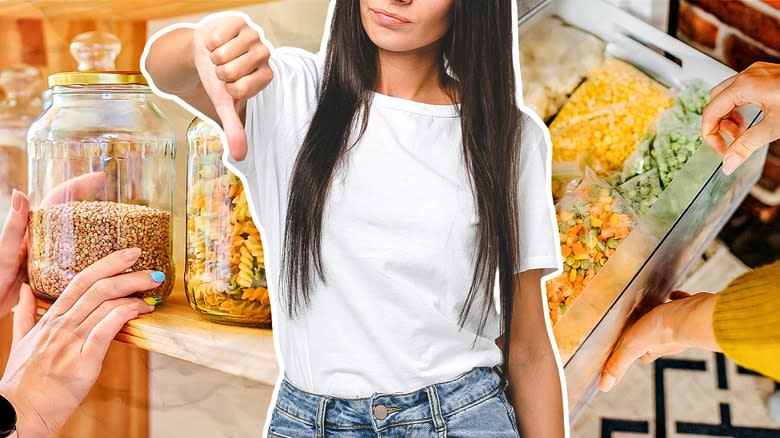
A well-organized kitchen serves as the heartbeat of a home, harmonizing the art of cooking with the serenity of daily life. Beyond mere aesthetics, an orderly kitchen is a sanctuary of efficiency and creativity, where the dance of culinary creation unfolds seamlessly, or at least we hope. The importance of keeping a kitchen well-organized extends far beyond the realms of neatness; consider it an investment in both the practicality of meal preparation and the tranquility of one's mental space. When the world starts to get really crazy out there, at least we can take refuge in our kitchens.
In the organized kitchen, every tool has its designated place, creating an environment where ingredients and equipment are easily accessible. The chaos of clutter is replaced by a symphony of arrangement, allowing chefs to focus on the alchemy of flavors rather than the hunt for misplaced utensils. Time is a precious commodity, and an organized kitchen optimizes it, transforming meal preparation into a streamlined and enjoyable process. Meanwhile, the psychological impact of a tidy space cannot be overstated, as it promotes a sense of control and calm amidst the bustle of daily life. So let's take a look at some concrete steps you can take to achieve this Zen attitude in the kitchen based on advice from our masterminds at Tasting Table and associated sites.
Read more: 11 Cleaning Tips For Keeping Your Oven Spotless
Forgetting The Baking Sheet Trick
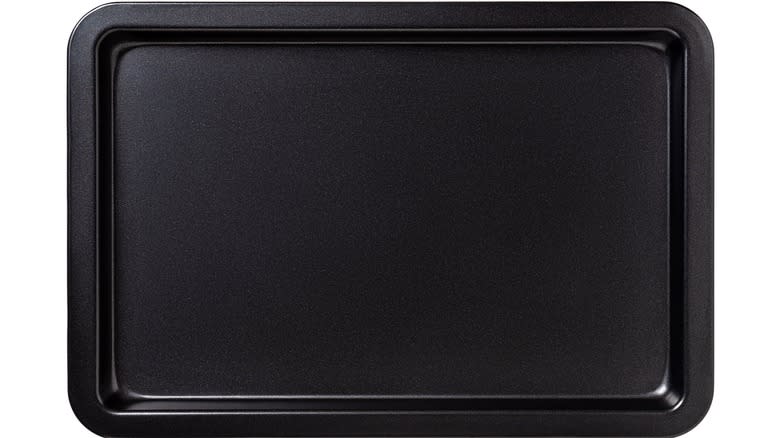
When we embark on a recipe, we often think about the challenges associated with the actual cooking and forget about the entire food prep stage, which is essential to the success of all the rest. This is a big kitchen organization no-no. To get a recipe right, you must be organized. This doesn't guarantee success, but it will make it a lot more likely.
One great tip for organizing your recipe preparation is to use a baking sheet to contain everything in a small, manageable area. That doesn't mean tossing everything into the sheet willy-nilly. You'll still need a few bowls or ramekins for setting aside your chopped onions and whatnot. Just be sure to keep those on your baking tray. This way you can have all your ingredients in one place before you begin cooking, which will make the whole process run more smoothly. As an added perk, if you spill anything while you whip up your kitchen magic, it'll fall into the tray instead of the counter, making for an easier clean-up. Lastly, keeping everything in a tray means others might be able to use the rest of the counter space if you are sharing the kitchen.
Using A Hodge-Podge Of Different Containers
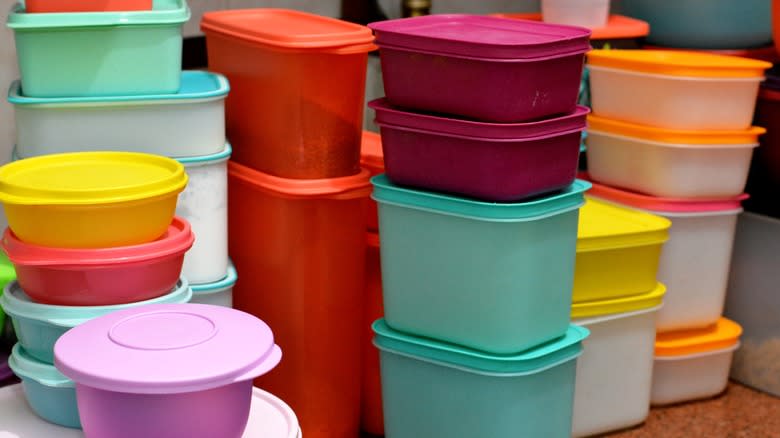
Many busy folks find the organized pantry an elusive beast. Who has the time to carefully place each item back on the shelf after use? It seems so much easier to just shove your jar of flour back in the pantry any old way and move on with your life. The problem with this attitude is that when you do that once, twice, 20 times, you end up with a cupboard of chaos.
To prevent this apocalyptic scenario, Geoffrey Zakarians suggests using containers of the same shape and size to store as many of your pantry goods as possible. When you have a rectangular box here, a round jar there, and a smaller round container somewhere else, it's not easy to make everything fit. But with matching containers, simply stack everything of similar shape and size together. For example, keep all your spices in identical jars and your flours in square and sealable vats. On top of that, designate a specific area in your pantry for items based on the shape and size of their packaging. This will save you from the prospect of impossible Tetris, where you're trying to squeeze a large, rectangular box of rice in with small and round cans of tuna.
Keeping Food In Bottom Cabinets
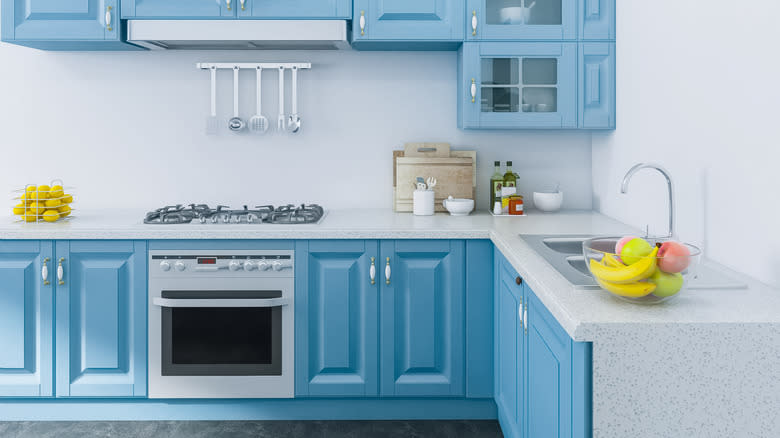
Food waste ranks as a major problem in our society, and it also leads to wasting money on food that goes uneaten. One way to help combat this societal ill? Store your food at eye level so that it will never be forgotten. Although your bottom cabinets may seem like an attractive option for storing your larger food items, what with all that space, they also make it easy to forget that you've placed something in them. Those deep, cavernous cabinets can store a lot of volume, but it's darker down there and that bottle of soy sauce that toppled over six months ago will probably stay there until the next spring cleaning.
Thus, eye level is the way to go. If you open your pantry and instantly notice an ingredient, you'll be more likely to use it. You may build a recipe around it before it expires, all while forgetting to check your lower cabinets to see if you have any soy sauce left. At least soy sauce has a long shelf life and can take it. But good luck de-spudding those potatoes from last month's grocery run.
Neglecting Your Cleaning
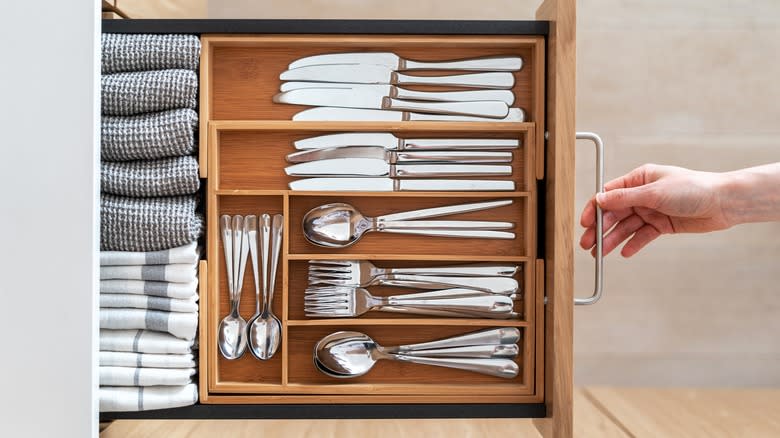
Everyone knows the importance of cleaning a kitchen soon after we're done cooking, or even during the cooking process, if time allows. So we go to town on the stove, the sink, and the countertop, prying off any unsightly crusts or wiping away potential staining agents. But many other parts of the kitchen get dirty through daily use, and some of these are all too often forgotten.
So, in the interest of helping you organize your kitchen, we'd like to highlight a few areas that you might have neglected to clean. In particular, you might not have noticed how much grease splattered onto your electric kettle when you made that big, juicy steak. Or you'd be surprised if you took a closer look at your spice rack only to find piles of dust and grime. But the worst offender is possibly your silverware drawer, which is usually positioned right under your workspace, and which therefore accumulates a lot of wayward food particles. Luckily, the easy resolution is to just take everything out, vacuum up the drawer, and wipe it down with a damp cloth.
Storing Food Improperly
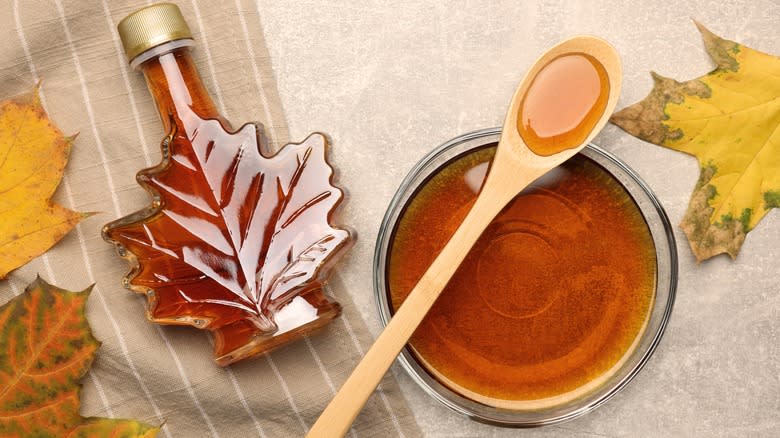
Improperly storing food can lead to numerous hassles. It could squish or deform it, or worse, cause it to go bad faster than you want it to. To help you avoid this whole mess, we're here with a few tips on how to better store some foods you might have been mistreating. It just takes a bit of organization, and once you remember where everything goes, and how it should be stored, your food storage mission should be complete.
For one, many people keep maple syrup in the cupboard. This works fine up until the bottle has been opened. After that, the syrup will quickly develop mold and go rancid. Store it in the fridge, and the stuff will last for months. Another trick you might not know is to add a bit of water to your leftover guacamole. Be sure to tightly pack it in its container first, as the point here is to avoid exposure to air, which turns guac from an appetizing bright green to a questionable brown. Lastly, if you're not the type of person who eats their bag of chips in one sitting, store any leftovers in the freezer. This will keep them from going stale without affecting their crispiness.
Employing Clear Containers For Everything
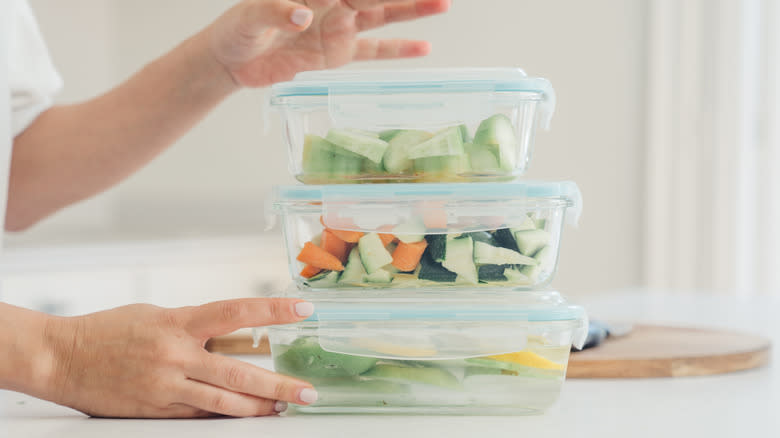
You may have heard that using clear containers for food storage can help with your kitchen organization goals. It allows you to quickly see what's in those containers, which helps you plan your shopping and all sorts of other kitchen tasks. But that doesn't mean those clear containers will work for everything.
For instance, some ingredients might suffer degradation when exposed to light. It is recommended to store potatoes in a cool, dark place, as sunlight will cause them to turn green or produce a toxic substance called solanine. Another thing to bear in mind is that many see-through containers are made of plastic. While glass ones are generally the safest, some plastic containers are not ideal for food storage and might not be resistant to mold or mildew, among other flaws. Additionally, the most important quality in a food container is not that it's transparent but that it's airtight. Exposure to air lets in all sorts of organisms, leading to faster degradation.
Not Decanting Dry Goods
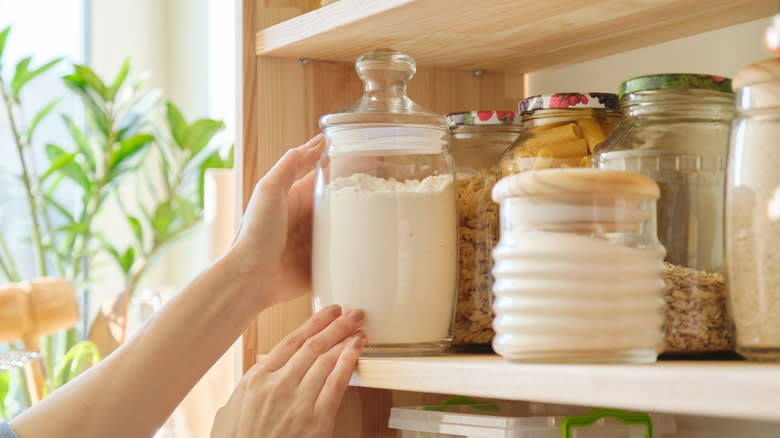
We often associate the word decanting with fine wines: it's the process of slowly and methodically pouring wine from its bottle into another container to separate any sediment that might have formed from the liquid and to expose it to oxygen, which heightens the flavor. All of this makes sense with such a complex and mysterious thing as wine.
But it can also be useful when storing flour and other dry goods. Although you don't necessarily need to pour these slowly and methodically, or even expose them to oxygen, it can help your kitchen organization to occasionally pour them into a new container. This helps you see whether weevils or other enemies of the pantry have taken up residence in your vat of rice. Catching them early is key, as they will likely move on to the next container once they've devastated the first. If you do find any of these pests, don't be too hard on yourself. They often get into our foodstuff at the processing stage, which doesn't always catch the eggs.
Inefficient Use Of Space
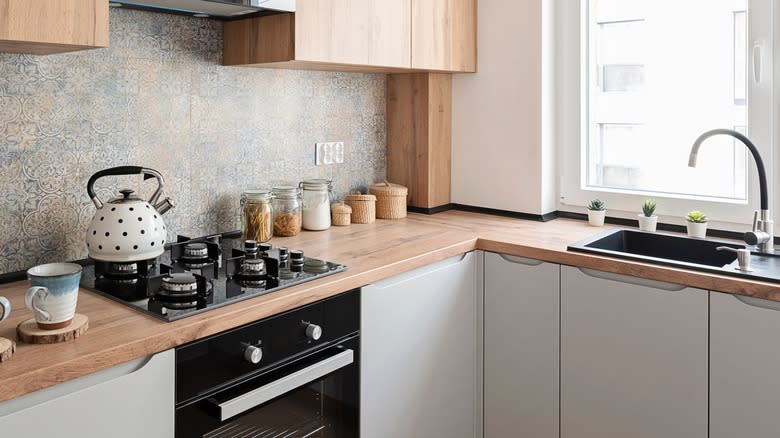
The efficient use of space seems to be a chimera for everyone; those with tiny kitchens don't have much to work with, while those with large ones tend to spread out unchecked. But with a bit of organization — mainly from the great minds at Tasting Table and our affiliates — we can turn this implausible dream into a concrete reality.
One of our top tips for using space efficiently is to store your baking tools for easy access. Start by setting aside a few adjoining spaces for baking equipment and dividing things up based on how often you use them. For instance, keep your measuring cups and measuring spoons together in one place near your set of sheet pans. Another great way to save space is to use as much wall space as possible. Consider installing magnetic knife and spice racks, so you don't have to use precious counter space.
Putting Your Bananas Next To Other Fruit
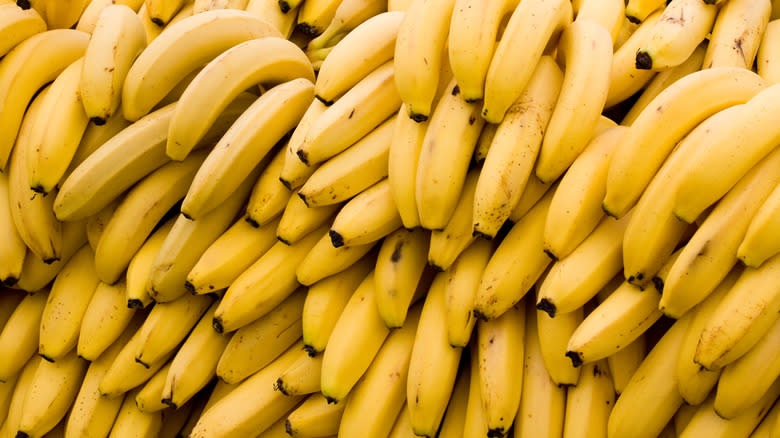
If you've ever bought bananas, you might have noticed that they tend to go from yellow to brown to black fairly quickly. What you might not know is that they can have this effect on fruits or vegetables placed beside them. So if your peaches touch your bananas, don't be surprised to find their bottoms squishy and moldy when you pick them up.
This happens because as they ripen, bananas produce a substance called ethylene, essentially a switch that tells a fruit to start ripening. The benefit to you is that if you want your fruit to ripen, just put it next to the bananas. But if you don't, keep it far apart. This isn't true of all fruit. Oranges, pineapples, and other fruits with heavy rinds tend to be more protected from the effects of the gas but beware of your apples, kiwis, and peaches. Therefore, to avoid complications, it's best to store your bananas all on their lonesome, perhaps in their own fruit bowl or on a banana hanger.
Leaving The Bread Out
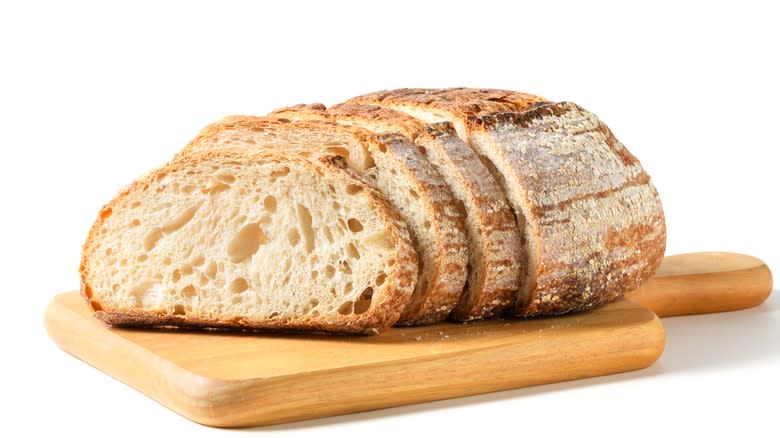
A nice artisanal loaf of bread is a precious thing. One with a perfectly crispy exterior and a beautiful fluffy interior is the stuff of legend. But it's also very fleeting. That perfect texture inside and out only seems to last for a day, if you're lucky, after which staleness sets in, turning that fluff into a hardened crust and the crust into something that might break your teeth. All of this and more will most likely happen when you leave your bread out, so don't leave your bread out.
Instead, store it in a bread box. It does what it says on the tin, meaning it's called a bread box because it actually helps keep your bread fresh, away from moisture and light. Another option involves slicing up that bread, putting it in a sealed container, and sticking it in the freezer. When you want to savor it again, just pull out as many slices as you want and pop them in the toaster. They won't retain that same puffy texture that only freshly baked bread can have, but they'll still taste as good as the day they were made.
Buying Into The Knife Block Myth
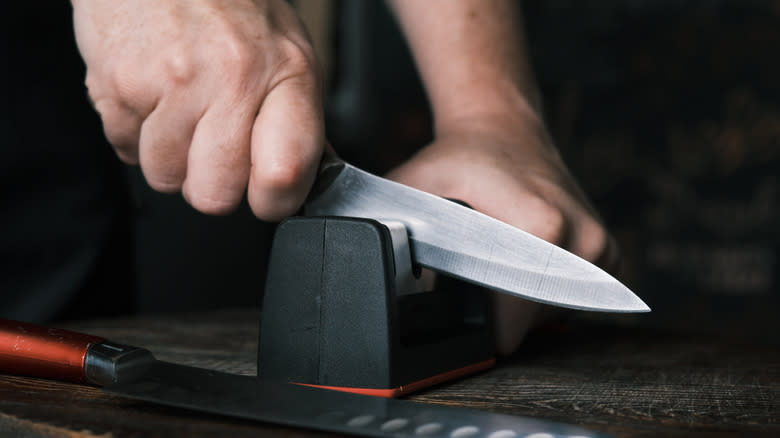
When decking out their kitchens with the tools and trappings of an organized home, many people make the mistake of placing a knife block on their shopping list. Storing all your kitchen knives in an easily accessible spot on the counter, in an orderly fashion, seems like a good idea. But that's until you learn just how much bacteria can get into those little slits, places where the sun doesn't shine and that are extremely difficult to clean. Blocks can also dull your knives over time, as slipping them in and out will exact some wear and tear on the blades.
At the same time, we also don't recommend storing knives in a drawer all loosey-goosey. Rather, consider dedicating a drawer to only knives and keep them in a sheath, in their original box, or laid out on a towel. All of these options will keep the blades from coming into contact with anything that might affect their sharpness. Another option is to hang your knives on a magnetic strip on the wall. Just be mindful to locate them where they won't incur any grease splattering. Also be aware that the magnetic strip can dull blades over time unless you take great care in removing them each time.
Not Resting The Cutting Board Over The Sink
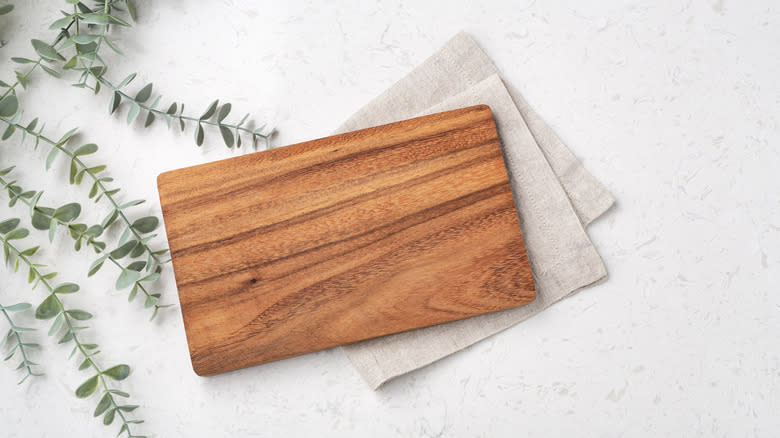
Unless you have a large kitchen and a coveted kitchen island, you might not have all that much counter space to work with when you set out to cook. Luckily, Rachael Ray devised a smart hack for increasing counter space without the need for an expensive renovation. She positions a large cutting board snugly on top of the sink, thereby extending the worktop and creating more wiggle room.
As an added perk, putting the cutting board over the sink means you can easily dump any scraps straight into your garbage disposal unit. You also won't have far to go between the process of washing your vegetables and getting them set up for the chopping block. And the best news of all is that you don't even need a special cutting board for this. Just make sure to purchase one that is long enough to cross over your sink without falling in.
Forgetting To Keep Track Of Pantry Items
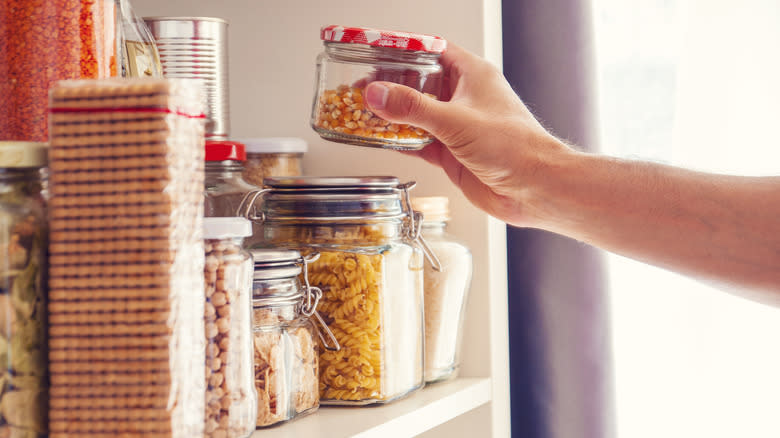
If you have a large pantry, or even a small overstuffed one, you might forget what's actually in there. Things easily end up in forgotten corners, or they get shoved behind a box of something, never to be seen again. This is when duplicates start to show up: you had no idea you still had all those cans of tuna at the back of your pantry, so you went out and got some more for that fish cake recipe.
But we have a simple hack to avoid such pitfalls and keep your pantry organization on track. The secret is to place a blackboard or whiteboard on or near your pantry and use it to record what goes in and what comes out. Not only will you have a better awareness of what ingredients you have on hand for a recipe, but you'll also avoid buying more food than you can reasonably use. In this way, your board can also double as a shopping list. You can also use the board to plan your meals around the pantry's contents. Just be sure to select categories for your board, so you know what's missing and what needs to be replaced. And don't forget to update it regularly.
Thinking Of Kitchen Organization In All The Wrong Ways
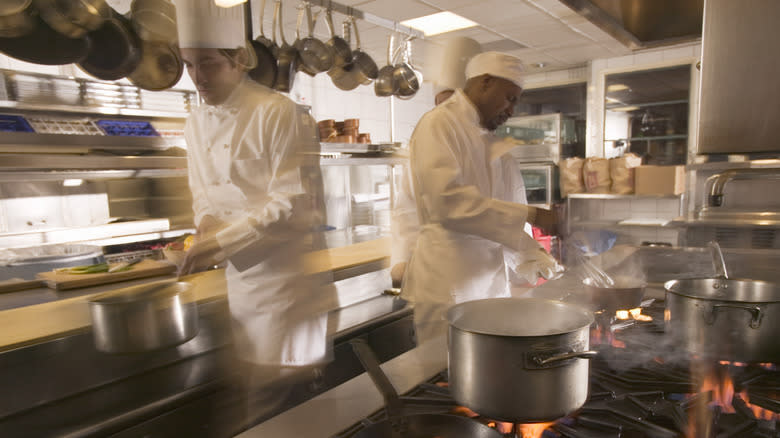
Sometimes you need to first organize your mind before you can organize your kitchen. More specifically, if your kitchen continues to be a mess despite your best efforts to tidy it up, perhaps it's time to think differently about what it means to keep a kitchen organized. Maybe the focus doesn't have to be on pantry stocking or fruit storage, but on minimizing the steps required to take to carry a recipe through to completion.
Indeed, this seems to be the guiding force behind many restaurant kitchens, where speed is of the essence. So why not take a page from their book and try it at home? To do that, picture your kitchen as having stations: one for food prep, one for cooking, and one for plating, by and large. Keep all kitchen items you don't need for these tasks, like cutlery or drinking glasses, somewhere else. This will help you move from prep to plating without anything getting in your way.
Read the original article on Tasting Table.

